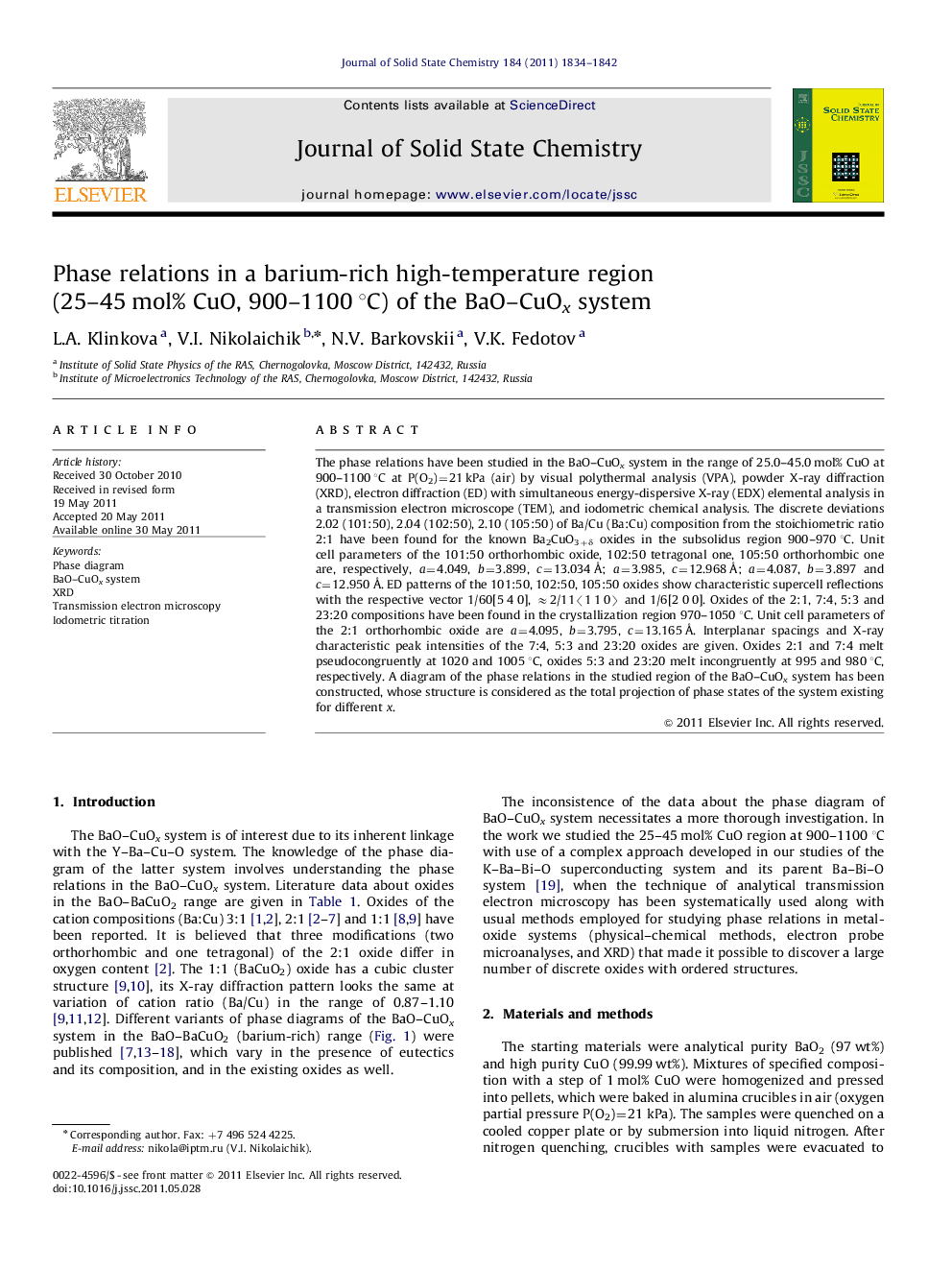| Article ID | Journal | Published Year | Pages | File Type |
|---|---|---|---|---|
| 1332928 | Journal of Solid State Chemistry | 2011 | 9 Pages |
The phase relations have been studied in the BaO–CuOx system in the range of 25.0–45.0 mol% CuO at 900–1100 °C at P(O2)=21 kPa (air) by visual polythermal analysis (VPA), powder X-ray diffraction (XRD), electron diffraction (ED) with simultaneous energy-dispersive X-ray (EDX) elemental analysis in a transmission electron microscope (TEM), and iodometric chemical analysis. The discrete deviations 2.02 (101:50), 2.04 (102:50), 2.10 (105:50) of Ba/Cu (Ba:Cu) composition from the stoichiometric ratio 2:1 have been found for the known Ba2CuO3+δ oxides in the subsolidus region 900–970 °C. Unit cell parameters of the 101:50 orthorhombic oxide, 102:50 tetragonal one, 105:50 orthorhombic one are, respectively, a=4.049, b=3.899, c=13.034 Å; a=3.985, c=12.968 Å; a=4.087, b=3.897 and c=12.950 Å. ED patterns of the 101:50, 102:50, 105:50 oxides show characteristic supercell reflections with the respective vector 1/60[5 4 0], ≈2/11〈1 1 0〉 and 1/6[2 0 0]. Oxides of the 2:1, 7:4, 5:3 and 23:20 compositions have been found in the crystallization region 970–1050 °C. Unit cell parameters of the 2:1 orthorhombic oxide are a=4.095, b=3.795, c=13.165 Å. Interplanar spacings and X-ray characteristic peak intensities of the 7:4, 5:3 and 23:20 oxides are given. Oxides 2:1 and 7:4 melt pseudocongruently at 1020 and 1005 °C, oxides 5:3 and 23:20 melt incongruently at 995 and 980 °C, respectively. A diagram of the phase relations in the studied region of the BaO–CuOx system has been constructed, whose structure is considered as the total projection of phase states of the system existing for different x.
Graphical AbstractA diagram of phase relations in the BaO–CuOx system in the range of 30.0–45.0 mol% CuO at 900–1050 °C at P(O2)=21 kPa (air) constructed on the data obtained by visual polythermal analysis (the liquidus line), XRD and ED with elemental analysis.Figure optionsDownload full-size imageDownload as PowerPoint slideHighlights► A combination of physical–chemical and structural methods was used. ► New discrete oxides have been found. ► The diagram reflects the total projection of phase states at different x.
